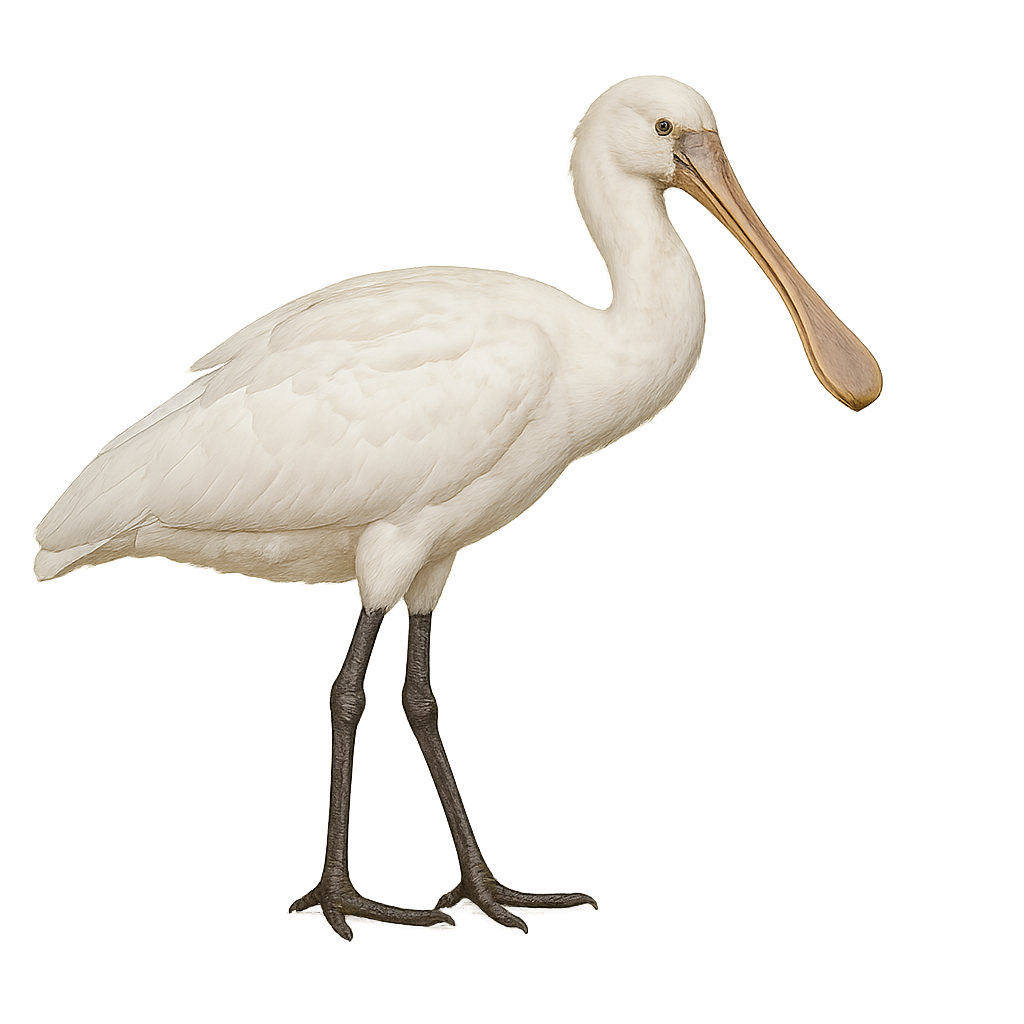Observe and photograph a species in its natural habitat
Learn where and when to observe a species in the wild, how to recognize it in the field, and what habitats it lives in. Get photography tips adapted to its behavior and capture stunning images without disturbing the animal. For full details, open the complete profile in the WildlifePhotographer app.
White Spoonbill
Scientific name: Platalea leucorodia

IUCN Status: Least Concern
Family: ARDEIDAE
Group: Birds
Shyness: Suspicious
Safe distance: 30 m
Breeding season / Courtship: 01.04-30.04
Gestation: 24 à 25 jours
Births: 25.05-25.06
Habitat:
Wetlands and marshes
Description:
The Eurasian Spoonbill is a medium-sized bird primarily found in wetlands across Europe, Asia, and North Africa. It measures about 80 to 95 cm in length, with a wingspan of 120 to 130 cm, and weighs between 1.5 and 2.5 kg. Its plumage is predominantly white, with a long spoon-shaped bill that allows it to forage in shallow waters, primarily feeding on aquatic invertebrates, small fish, and crustaceans. The Eurasian Spoonbill is often seen in groups, feeding in marshes, rice fields, or estuaries. It is migratory, moving to warmer regions during the winter. While its population remains stable in certain areas, the Eurasian Spoonbill faces threats related to habitat loss, water pollution, and urbanization.
Recommended lens:
>=300 mm
Photography tips:
Use a telephoto lens to photograph from a distance, respecting the discreet nature of the species.
Photograph early in the morning or late in the afternoon, when the soft light highlights the bright white plumage of the spoonbill, especially its long spatula-shaped bill.
Look for it in wetland areas, such as marshes, estuaries, lagoons, and riverbanks, where it mainly feeds on small fish and aquatic invertebrates.
Be patient and discreet to avoid disturbing its natural behavior. Avoid sudden movements and maintain silence.
The Spoonbill is a protected species in many regions due to the loss of its natural habitat. It is essential to respect its environment and minimize disturbances, especially during the breeding season.
Ready to take action?
Choose your platform and start your free trial today



